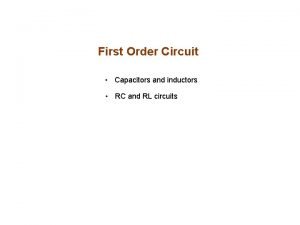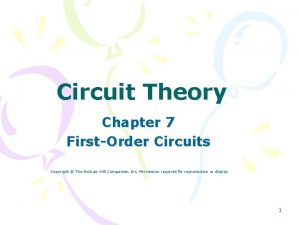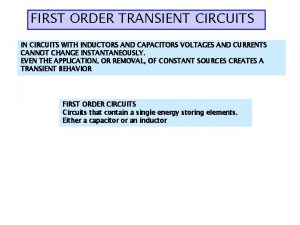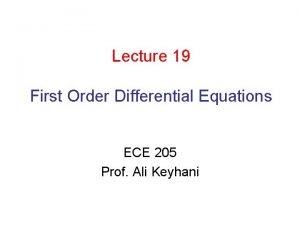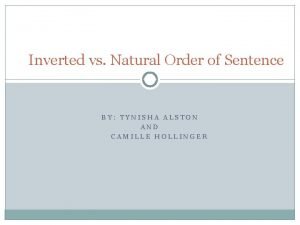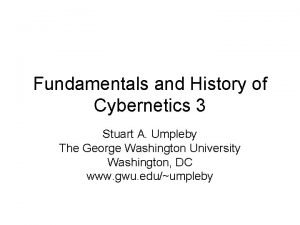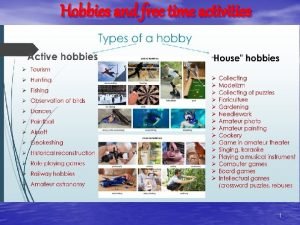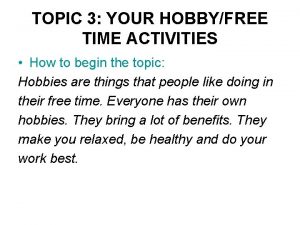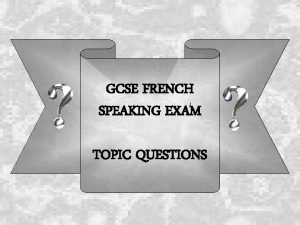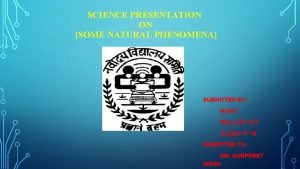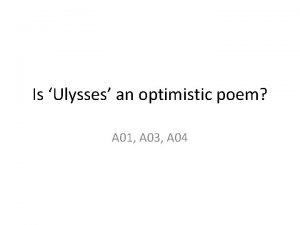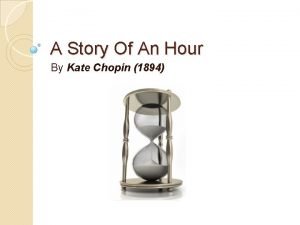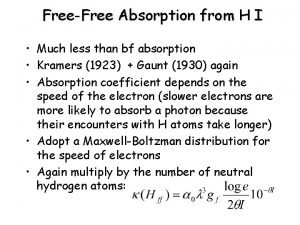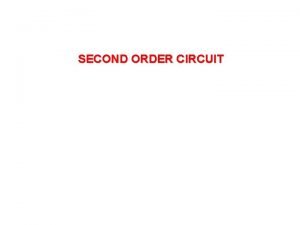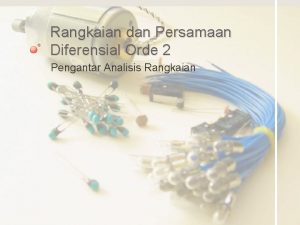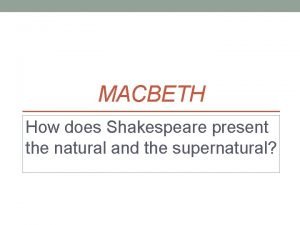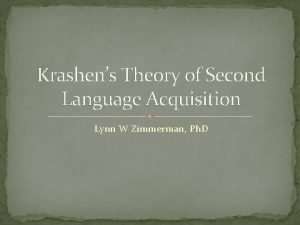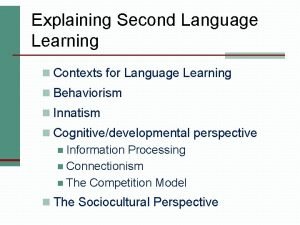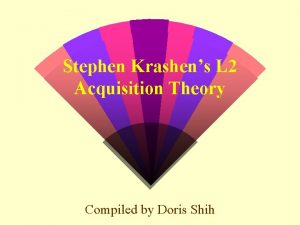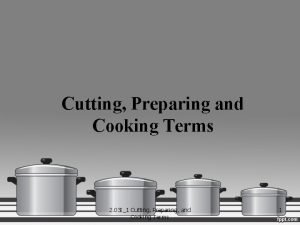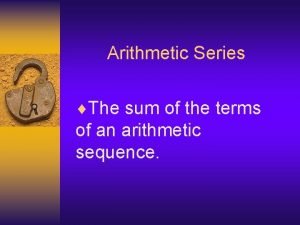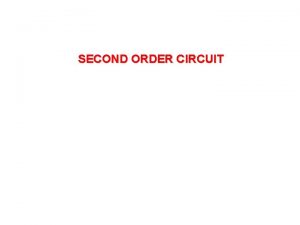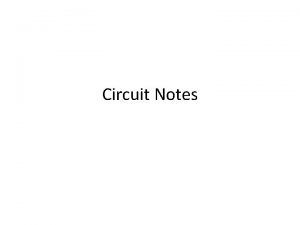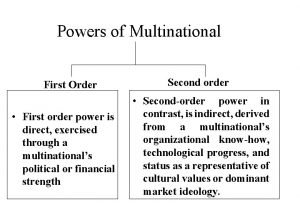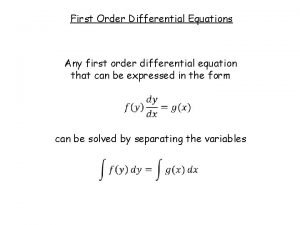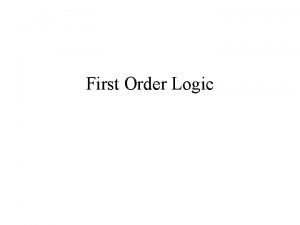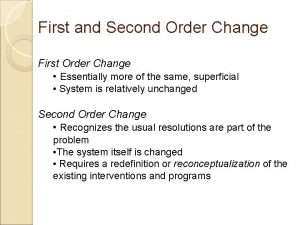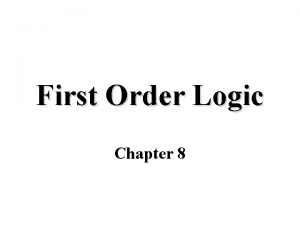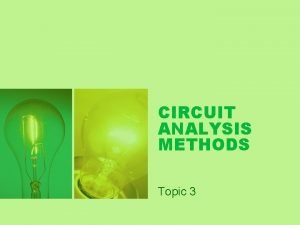FIRST ORDER CIRCUIT Topic v Natural ResponseSource Free











































- Slides: 43

FIRST ORDER CIRCUIT

Topic v Natural Response/Source Free of RL Circuit v Natural Response/Source Free of RC Circuit v Step Response of RL Circuit v Step Response of RC Circuit

First – Order Circuit • A circuit that contains only sources, resistor and inductor is called and RL circuit. • A circuit that contains only sources, resistor and capacitor is called an RC circuit. • RL and RC circuits are called first – order circuits because their voltages and currents are describe by first order differential equations.

First – Order Circuit R i L An RL circuit vs – + Vs R i C An RC circuit

Review (conceptual) • Any first – order circuit can be reduced to a Thévenin (or Norton) equivalent connected to either a single equivalent inductor or capacitor. RTh RN L VTh – + IN C ØIn steady state, an inductor behave like a short circuit. ØIn steady state, a capacitor behaves like an open circuit.

Review (conceptual) • The natural response of an RL and RC circuit is its behavior (i. e. , current and voltage ) when stored energy in the inductor or capacitor is released to the resistive part of the network (containing no independent sources) • The steps response of an RL and RC circuits is its behavior when a voltage or current source step is applied to the circuit, or immediately after a switch state is changed.

Natural Response of an RL circuit Ø Consider the following circuit, for which the switch is closed for t<0, and then opened at t = 0: t=0 Io Ro i L + R V – ØThe dc voltage V, has been supplying the RL circuit with constant current for a long time

Natural Response of an RL circuit Solving the circuit For t ≤ 0, i(t) = Io. Switch is closed. Inductor act as short circuit. ii. At t = 0, assume inductor has initial current, Io iii. The initial energy stored in the inductor is, i.

Natural Response of an RL circuit iv. For t ≥ 0, switch is open and the circuit reduce to

Natural Response of an RL circuit • Applying KVL to the circuit: (1)

Natural Response of an RL circuit • From equation (1), let say; (2) • Integrate both sides of equation (2);

Natural Response of an RL circuit • hence, the current is

Natural Response of an RL circuit • From the Ohm’s law, the voltage across the resistor R is: • the power dissipated in the resistor is:

Time Constant, τ for RL circuit • Time constant, τ determines the rate at which the current or voltage approaches zero. • The time constant of a circuit is the time required for the response to decay to a factor of 1/e or 36. 8% of its initial current • Natural response of the RL circuit is an exponential decay of the initial current. The current response is shown in figure.

Time Constant, τ for RL circuit • Time constant for RL circuit is • Unit : seconds.

• The expressions for current, voltage, power and energy using time constant concept:

Example 1 • The switch has been closed for a long time. At t = 0, the switch is opened. Calculate i (t) for t > 0.

Example 2 • The switch has been closed for a long time. At t = 0, the switch is opened. Calculate i (t) for t > 0.

Natural Response of an RC Circuit • The natural response of RC circuit occurs when its dc source is suddenly disconnected. The energy already stored in the capacitor, C is released to the resistors, R. • Consider the following circuit, for which the switch is closed for t < 0, and then opened at t = 0: + Vo Ro C t=0 + v – R

Natural Response of an RC Circuit Solving the circuit i. For t ≤ 0, switch is closed. Capacitor behaves as open circuit. ii. Voltage will be v(t) = Vo iii. At t = 0, the initial voltage v(0) = Vo iv. The initial value of the energy stored is

Natural Response of an RC Circuit v. For t > 0, switch is opened. The circuit reduces to i + Vo + Ro C v – R

Natural Response of an RC Circuit • Applying KCL to the RC circuit: (1)

Natural Response of an RC Circuit • From equation (1), let say: (2) • Integrate both sides of equation (2): (3) • Therefore: (4)

Natural Response of an RC Circuit • The voltage is: • Using Ohm’s law, the current is: • The power dissipated in the resistor is:

Time Constant, τ for RC circuit • The time constant for the RC circuit equal the product of the resistance and capacitance, • Time constant, seconds

Time Constant, τ for RC circuit • The natural response of RC circuit illustrated graphically in figure.

• The expressions for voltage, current, power and energy using time constant concept:

Example 3 The switch in the circuit below has been closed for a long time, and it is opened at t = 0. i. Find v(t) for t ≥ 0. ii. Calculate the initial energy, W stored in the capacitor.

Summary of Natural Response No RL circuit 1 RC circuit 2 Inductor behaves like a short circuit when being supplied by dc source for a long time Capacitor behaves like an open circuit when being supplied by dc source for a long time 3 Inductor current is continuous i. L(0+) = i. L(0 -) Voltage across capacitor is continuous v. C(0+) = v. C(0 -)

Switching time • For all transient cases, the following instants of switching times are considered. ü t = 0 - : switching between -∞ to 0 or time before. ü t = 0+ : switching at the instant just after time t = 0 s (taken as initial value) ü t = ∞ : switching between t = 0+ to ∞ (taken as final value for step response) • The illustration of the different instance of switching times is: ∞ ∞

Step Response of RL Circuit • The step response is the response of the circuit due to a sudden application of a dc voltage or current source. • Consider the RL circuit below and the switch is closed at time t = 0. i(t) + Vs R + t=0 L v(t) –

Step Response of RL Circuit • After switch is closed, using KVL

Step Response of RL Circuit

Step Response of RL Circuit • the current is; • Or may be written as; • i(0) : initial values of i • i(∞) : final values of i,

Step Response of RL Circuit • The voltage across the inductor is; • Or;

Example 4 The switch is closed for a long time at t = 0, the switch opens. Find the expressions for i. L(t) and v. L(t). t=0 10 V + 2Ω 3Ω i 1/3 H

Example 4

Step Response of RC Circuit • Consider the RC circuit below. The switch is closed at time t=0 + t=0 Is R C i vc(t) –

Step Response of RC Circuit • From the circuit; (1) • Division of Equation (1) by C gives; (2)

Step Response of RC Circuit • Same mathematical techniques with RL, the voltage is: • Or can be written as: • v(0) : initial values of v • v(∞) : final values of v

Step Response of RC Circuit • And the current is: • Or can be written as:

Example 5 The switch has been in position a for a long time. At t = 0, the switch moves to b. Find Vc(t) for t > 0 and calculate its value at t=1 s and t=4 s 3 kΩ 24 V + 5 kΩ a + Vc – 4 kΩ b t=0 0. 5 m. F + 30 V

Example 5
 Rc first order circuit
Rc first order circuit Chapter 7 first-order circuits
Chapter 7 first-order circuits First order transient circuit
First order transient circuit First order circuit
First order circuit Natural sentence
Natural sentence 1st order 2nd order 3rd order neurons
1st order 2nd order 3rd order neurons First and second order change
First and second order change First order cybernetics and second order cybernetics
First order cybernetics and second order cybernetics Pee writing strategy
Pee writing strategy Narrow down topic
Narrow down topic Speaking questions about hobbies
Speaking questions about hobbies Free enterprise and other economic systems
Free enterprise and other economic systems Time topic
Time topic Examtopic
Examtopic Disadvantages of series circuits
Disadvantages of series circuits Parallel circuit vs series circuit
Parallel circuit vs series circuit Circuit construction kit
Circuit construction kit Voltage and current series parallel
Voltage and current series parallel What is a incomplete circuit
What is a incomplete circuit Shorted resistor parallel circuit
Shorted resistor parallel circuit Static vs current electricity venn diagram
Static vs current electricity venn diagram Circulatory system diagram
Circulatory system diagram What is a parallel circuit in physics
What is a parallel circuit in physics First order system transfer function
First order system transfer function First order rc
First order rc Natural hazards vs natural disasters
Natural hazards vs natural disasters Natural income
Natural income Some natural phenomena class 8 ppt free download
Some natural phenomena class 8 ppt free download Gibbs free energy unit
Gibbs free energy unit How to find free energy
How to find free energy Change in gibbs energy
Change in gibbs energy The allocation map
The allocation map Helmholtz free energy and gibbs free energy
Helmholtz free energy and gibbs free energy Optimistic poem
Optimistic poem A story of an hour summary
A story of an hour summary Free free absorption
Free free absorption Overdamped response equation
Overdamped response equation Rangkaian orde 2
Rangkaian orde 2 How does shakespeare present the supernatural in macbeth
How does shakespeare present the supernatural in macbeth Natural order hypothesis
Natural order hypothesis Noticing hypothesis
Noticing hypothesis The causative variable in second language acquisition
The causative variable in second language acquisition To cut food into small uneven pieces
To cut food into small uneven pieces Average of first 80 natural numbers
Average of first 80 natural numbers
